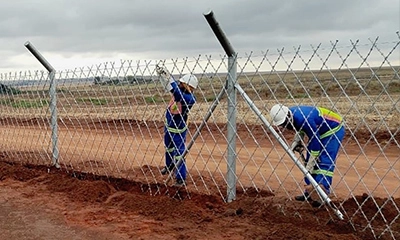
Begin by assessing the area where the razor wire is to be installed. Determine the length of the perimeter and check for any obstacles or special conditions that might affect installation.
Gather all necessary tools and safety gear. Typical tools might include gloves, wire cutters, pliers, and a ladder or cherry picker for higher installations.
Purchase the required amount of flat wrap razor wire sizes and supporting materials from one of the China leading razor mesh fence suppliers, such as fence posts or brackets, depending on whether the wire will be mounted on an existing fence or installed standalone.

Install fence posts or brackets at regular intervals around the perimeter, ensuring they are firmly anchored and capable of supporting the razor wire.
Carefully unroll the razor wire along the course of the fence posts or the top of the existing barrier. Use specialized tools to handle the wire as it is very sharp and can easily cause injuries.
Secure the razor wire to the posts or existing fence using binding wire or ties. Make sure the wire, including flat razor wire fence and OEM spiral razor barbed wire is taut and securely attached so that it does not sag or come loose.

Once the wire is installed, inspect the entire length for any loose sections or potential hazards. Adjust as needed to ensure the wire is uniformly secure.
Post warning signs around the perimeter to alert individuals to the presence of razor wire, which is a crucial step for installing razor wire to prevent accidental injuries.
Regularly inspect the installation over time to address any issues such as rusting, loosening, or damage from environmental factors or wildlife.